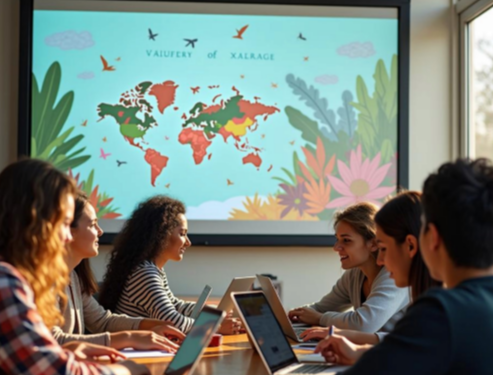How Technology Is Changing Traditional Classrooms

Technology is fundamentally altering the landscape of traditional classrooms. Digital tools are reshaping how educators present material and engage students. Interactive simulations and online resources foster active learning and collaboration. Furthermore, personalized learning technologies cater to individual needs, enhancing educational outcomes. This transformation raises critical questions about the future of teaching and learning dynamics. What implications do these changes hold for educators and students alike?
The Rise of Digital Learning Tools
In recent years, an increasing number of educational institutions have embraced digital learning tools, transforming traditional teaching methods.
Digital textbooks offer students immediate access to a wealth of information, while interactive simulations provide immersive experiences that foster critical thinking.
These innovations not only enhance learning but also promote autonomy, allowing students to explore concepts at their own pace, ultimately redefining the educational landscape.
Enhancing Student Engagement Through Technology
Digital learning tools not only provide access to information but also play a pivotal role in enhancing student engagement.
By incorporating interactive simulations and gamification strategies, educators can transform traditional lessons into immersive experiences.
These innovative approaches foster active participation, allowing students to explore concepts dynamically and collaboratively, ultimately cultivating a deeper understanding and a genuine enthusiasm for learning in the classroom environment.
Personalized Learning Experiences
As technology continues to evolve, it increasingly enables personalized learning experiences that cater to the unique needs and preferences of individual students.
Through adaptive assessments, educators can identify specific learning gaps, tailoring instruction accordingly. Additionally, individualized feedback fosters a deeper understanding, empowering students to take ownership of their learning journey.
This dynamic approach not only enhances engagement but also promotes academic freedom and development.
Collaborative Learning in the Digital Age
While traditional classroom settings often limited collaboration to physical proximity, the advent of technology has transformed this dynamic, facilitating a more interconnected learning environment.
Group projects thrive through digital platforms, enabling students to collaborate seamlessly across distances. Virtual discussions foster diverse perspectives, encouraging innovative problem-solving and deeper understanding.
This shift not only enhances engagement but also prepares learners for a globally connected world.
Conclusion
In the garden of education, technology serves as the sun that nourishes the blossoming flowers of knowledge. As digital tools illuminate the path, students navigate a landscape rich with personalized learning and collaborative exploration. This transformation fosters a vibrant ecosystem where traditional methods give way to dynamic interactions, cultivating a generation of learners prepared to thrive in an interconnected world. Thus, technology not only reshapes classrooms but also plants the seeds for a future where education flourishes endlessly.


